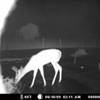Abstract
One sure way to prevent deer damage to your landscape is to choose plants that deer do not like to eat. Unfortunately, deer foraging preferences vary geographically and studies conducted with captive deer aren’t always accurate. So UF/IFAS wildlife researchers investigated the foraging preference of wild white-tailed deer at two sites in Gadsden County with high deer densities for two years. Of 11 wildflowers tested, four were very susceptible to browsing: fringeleaf tickseed, Florida tickseed, coastalplain tickseed, and orange coneflower. This 4-page fact sheet was written by Holly K. Ober, Lucas W. DeGroote, James H. Aldrich, Jefferey G. Norcini, and Gary W. Knox, and published by the UF Department of Wildlife Ecology and Conservation, December 2011.
WEC315/UW360: Wildflowers Susceptible to Deer Damage in North Florida (ufl.edu)

